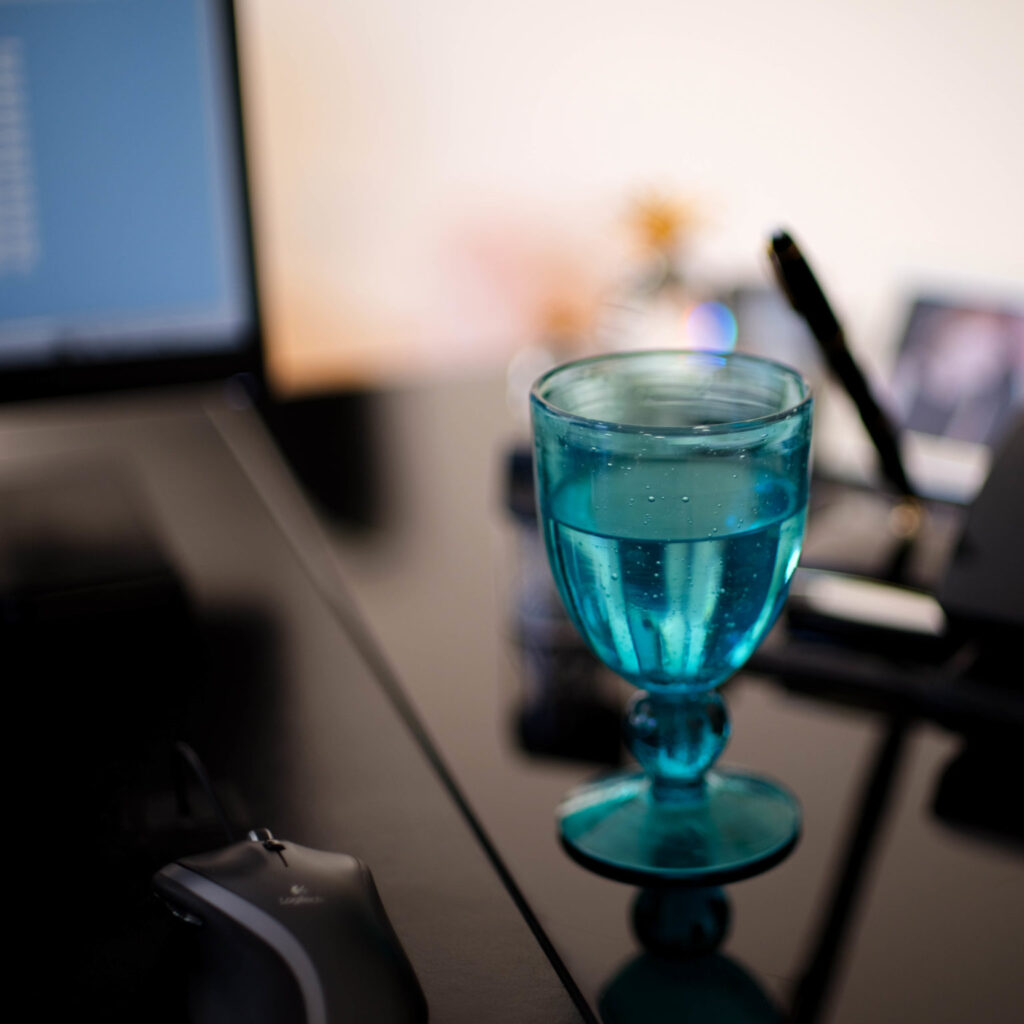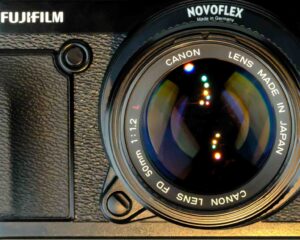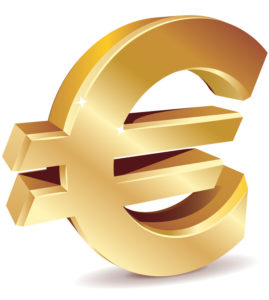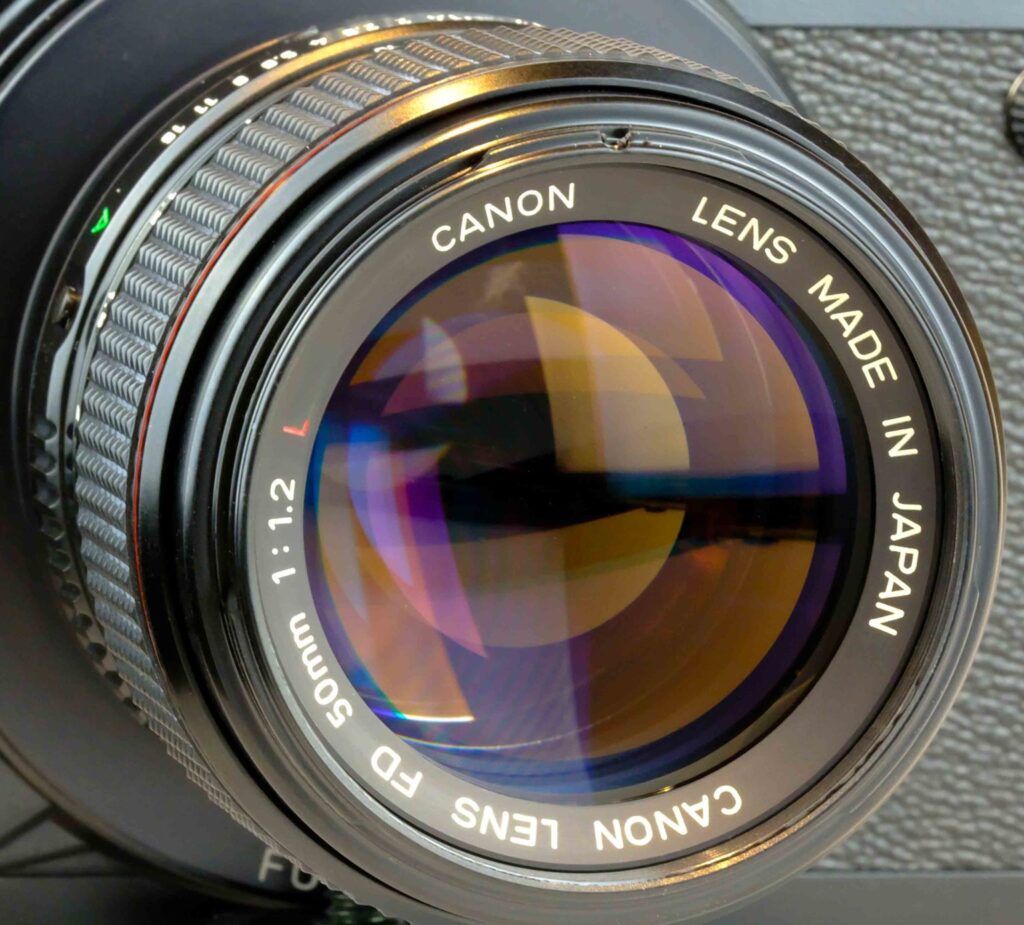
"NOCTILUX" 39,5mm f 0.95 by CANON on FUJI GFX
This forty year old, 50mm f1.2 L FD aspherical lens from CANON is the optically most advanced 50mm lens with exclusively manual focusing of all times.
Even LEICA has never built aspheres and floating elements into their 50mm f1.2 lenses.
I bought the one pictured here in early 2020 for € 699 at a LEICA dealer in Austria. What this lens does is very impressive, regardless of the price.
Why 39.5mm f0.95?
Because the labelling on the lens (50mm f1.2) is calculated for full format (also: 35mm format) - but the FUJI GFX camera has a reduced medium format sensor. For conversion you need the so-called crop factor, which affects the focal length (50mm > 40mm) and the depth of field (f1.2 > f0.95), but not the luminosity!
No matter which sensor size you have - all you need is just one light meter. Because the speed of a lens always remains the same regardless of the sensor size, but not the focal length and depth of field.
Here is the link to the website with the Crop Factor Calculator.


WITH NOVOFLEX ADAPTER ON FUJI GFX 50R
This picture was taken with low light and open aperture (f0.95). The medium format of the FUJI reduces the already thin depth of field of this CANON lens even further.
I focused on the air bubbles in the upper part of the glass; you can see that the sharpness level is already left after a little curvature, the stem of the glass is already completely out of focus. You can judge from the air bubbles that are in the focus plane, that the lens images well despite the demanding 50 megapixels of the FUJI GFX.
The beauty of a bokeh is of course a matter of taste; personally, I find this delicate background very, very beautiful


HOW CAN THE COMPARATIVELY LOW PRICE BE EXPLAINED?
Unlike at NIKON, where the F-Mount was maintained with the introduction of the autofocus lenses and thus the purely manually focusable lenses could be used on the new cameras, CANON had decided to change the bayonet in 1987, from the FD-Mount to the EF-Mount.
This meant that the old lenses could no longer be used on the new cameras and were thus subject to a significant drop in price that continues to this day, even though these lenses could now be used on mirrorless cameras with adapters.
WHAT IS SO SPECIAL ABOUT THIS OBJECTIVE?
The construction - the aspherical lenses and the floating elements have several positive effects:
- firstly, the lens is very compact for its light intensity. An open aperture of f1.2 normally requires oversized front lenses to let in and bundle the necessary amount of light.
- even with an open aperture, this lens is sharper than many other lenses in a stopped down state. If you stop down, it has a sharpness that reaches far into the corners.
- chromatic aberrations and distortions are also almost completely eliminated by the design. Backlighting is also well tolerated.
- due to its wide open aperture it can even be used on medium format cameras. The vignetting is also retracted so far into the corners at open aperture that it can be easily clipped away given the megapixels of a medium format camera like the FUJI GFX 50R. On an APSC or full format this should be even better.
- and of course the price . . .

IMPORTANT:
The above video with the turntable shows the earlier version of this lens, without the label with the red "L" and without the red ring outside the lens. Be sure to take care when buying if you want the best version of this lens.
If you want to get more detailed information about this lens (with "L"), you can do so on the website of the American expert Ken Rockwell.

CONCLUSION
Of course, this lens also has weaknesses compared to more recent ones. It records somewhat softer and less contrasty overall - and it has no autofocus.
If you can live with that, you can take still lifes, portraits, landscape and architectural shots that are different, with beautiful colors, a very soft bokeh and a very unique character.
My FUJI GFX camera has a sub-item in the menu called "SMOOTH SKIN EFFECT". The camera and the lenses available for it produce such clinically sharp images that you can see every pore, every blemish and every wrinkle.
Not only women don't like this, and so FUJI has reacted in such a way that for portraits, for example, the sharpness of the photographs that can be reduced with this camera.
With the CANON lens discussed here you can easily get very attractive portraits - without any "smoothing". . .
